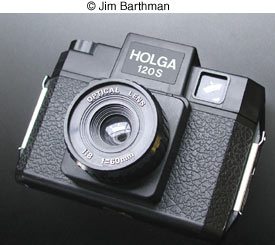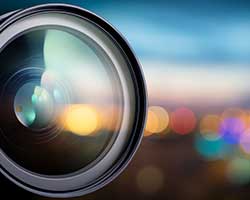
My introduction to digital imaging began in 2002 with the Nikon Coolpix 990, a sort of "house camera" at the School that I got to play around with. Personally I didn't care for the odd swivel design but I was impressed with the sharp pictures the 3.2mp sensor was able of capturing and it was certainly compact. By early 2003 I had my own digital compact, the Olympus C4000 (4mp), and it is still taking great photos (it belongs to my wife now). In late 2003 I bought an Olympus C5050 (5mp) which I occasionally use even now, mostly for low-light work. It's my "take everywhere" camera, still quite small but packed with features. This was followed in 2004 by the Olympus C8080 and now we're up to 8mp. The C8080 was quite a bit larger (and heavier) than previous models, so much so that the word "compact" doesn't really apply anymore.
I mention all this because I know many people have followed a similar track with digital cameras. But let's get to the main subject of this article — why I moved to a DSLR. What's wrong with digital compacts (sometimes referred to as point-and-shoot cameras) anyway? Well, nothing, especially if you want something that will fit in your pocket. But there are "issues" with the compacts that are familiar to anyone who has used one. One, slow capture. Press the shutter button and there is typically a delay before the photo is actually taken. Then you often wait some more while the image is written to the memory card, especially if the camera has a small buffer. Shoot RAW, a format many pros and others prefer, and the wait can seem interminable. For example, a RAW file on the Olympus C8080, an otherwise fine instrument, takes about 12 seconds to write to the card, during which time the camera locks up.
Two, noise. Those cute little compacts have really small sensors. Not necessarily a problem when shooting at the lowest sensitivity (ISO setting) but when you increase that — oh boy, watch out! True, you can employ noise-reduction software, post-capture, but noise reduction of any kind always entails some loss in detail and sharpness. You have to decide for yourself how much loss is acceptable.
Three, depth of field. The depth of field is really large on these cameras, even if you are using the maximum aperture. It works well for my photographic style but suppose you want to blur the background in a portrait shot? Pretty hard unless you are really close to your subject (and doing that introduces a different problem - perspective distortion) or the background is some distance away from the camera position.
Four, fixed lens. Yes, some of the compacts accept accessory lens attachments that provide you with a wider capture angle or a closer view of a distant subject. But the tradeoffs are usually less sharpness, nasty optical aberrations, and loss of lens speed.
Five, tiny viewfinders, whether optical or the EVF type. Many people prefer to compose and shoot with the LCD screen on the back, holding the camera at arm's length in front of them. Not exactly comfortable and quite conducive to camera shake.
There are other disadvantages inherent in compacts but I don't want to belabor this. DSLR's overcome all of them, right? Well, not exactly. SLR's (and their film brethren) do offer lens interchangeability. You do have more control over depth of field. Noise is much less apparent, mostly due to the larger sensors, thus making high-ISO capture more practical. But the difference you will notice the first time you press the shutter release button is fast response. With some of the models, this response is nearly instantaneous. Write times are fast too and if the camera features a large memory buffer (and an appropriately fast card), you can often shoot as quickly as you can move your finger.
What's not so great? Well, you are not going to shove a DSLR into your pocket. Some of the Pentax models are relatively small but still rather bulky compared to the compacts. Viewfinders, while a huge improvement over what's available on the compacts, still tend to be somewhat cramped and not nearly as bright as film SLR's. Cost is a factor too though there are now many models priced below $1000, including a kit lens. But the dirty little secret that's not so secret is dust on the sensor and the more often you change lenses, the more likely you will see dust specs on your photos. There are strategies for reducing and/or eliminating the dust, including cleaning the sensor yourself and there are an ever increasing number of tools to accomplish just that. You do this at your own risk, however.

Ok, so which DSLR did I buy for my own use? Well, I did a lot of research, looked at all the reviews, talked to actual users, read the various camera specifications, and finally, got to handle several models. I settled on the Pentax K10D, a 10.2mp beauty that was introduced in late 2006. I won't go over all the features; just the particular ones that attracted me. One, shake reduction built into the camera body. I'm not as steady a shooter as I was in my younger years and a tripod isn't always practical. Nikon and Canon have image stabilization built into some of their lenses and some folks say that type is more effective with long focal length lenses. Not an issue for me, though, because the longest focal length I currently use is 70mm. It works great with the lenses I use.
The K10D has fine build quality (you can feel it) and weather seals, as well as a built-in sensor cleaner, though I find the latter to be not very effective. The viewfinder is big and bright too, surprising in a camera with your typical APS-C sensor. Two RAW formats to choose from — PEF (Pentax's proprietary RAW) and Adobe DNG. I routinely shoot with the latter, even though the file sizes are bigger than PEF.
Should YOU buy a K10D? I can't really answer that. It depends on your particular needs, your budget, and whether you have any lenses you used with a 35mm SLR. Frankly, I don't think you would go wrong with any of the current models. Just make sure you go into a store and handle them first. You'll probably find that some models fit your hand better than others and/or have controls that are placed more comfortably for you. Then decide.






